Dealing with persistent toe pain? An ingrown toenail could be to blame, a common condition where the corner or side of the toenail grows into the soft flesh, causing pain, inflamed skin, and swelling. This can escalate to an infection if not treated. Don’t suffer in silence discover the solutions to alleviate your discomfort today!
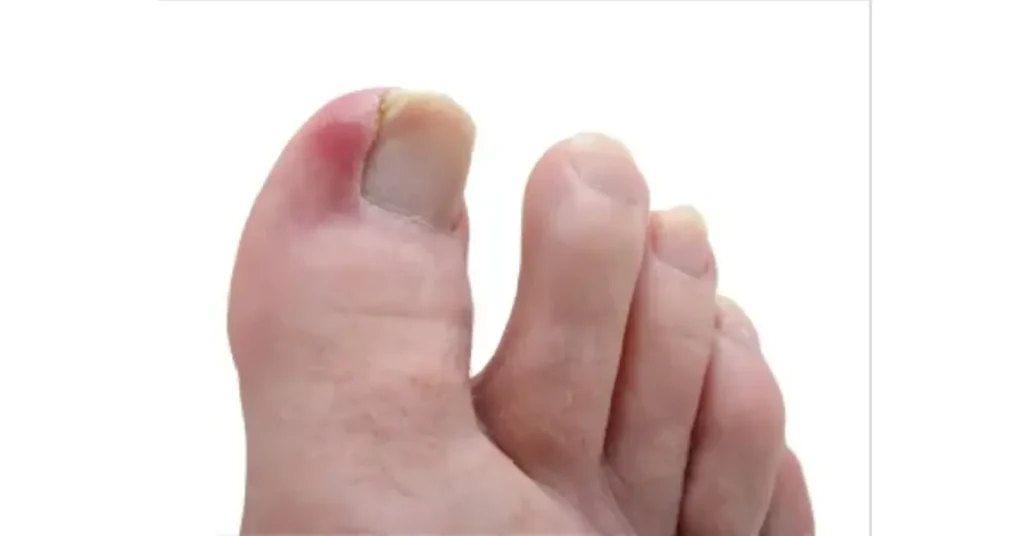
Table of Contents
What is an Ingrown Toenail?
An ingrown toenail occurs when the edge of the nail pushes into the soft tissue of the side, causing redness, swelling, and significant pain. This can lead to an infection if not treated properly, with the big toe most often affected. As a podiatrist, I’ve seen how wearing tight shoes and pressure on the toe can make symptoms worse.
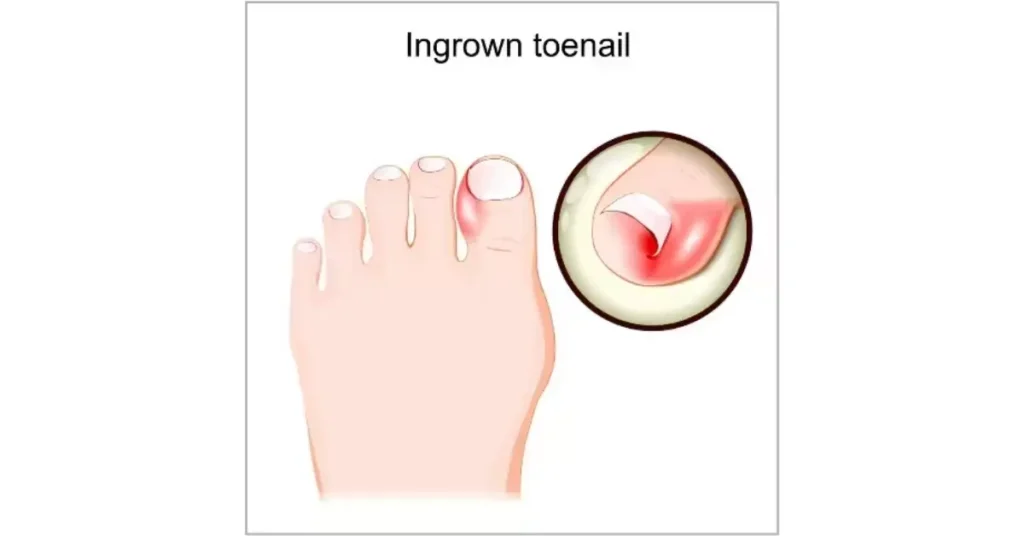
Who is likely to have an ingrown toenail?
Anyone can develop an ingrown toenail, but those at higher risk include Higher risk include:
- Higher risk for athletes
- Individuals with diabetes
- Those with severe nerve damage
- People with poor blood circulation in the leg and foot
- Sufferers of nail infections like paronychia
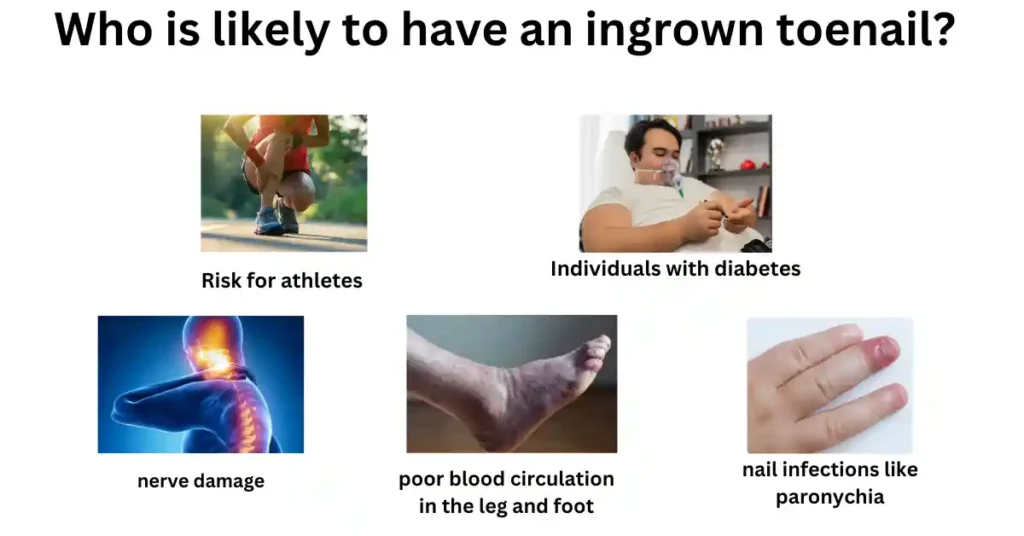
Symptoms
An ingrown toenail typically manifests with various symptoms that can significantly impact daily life. Here are the common symptoms you may observe:
- Pain along the side of the toe, particularly when pressed or in tight shoes.
- Tenderness around the affected nail, making touch uncomfortable.
- Red and inflamed skin near the ingrown nail.
- Noticeable swelling around the toe, often causing difficulty in wearing shoes.
- Potential infection, indicated by increased redness, warmth, and possibly pus formation.
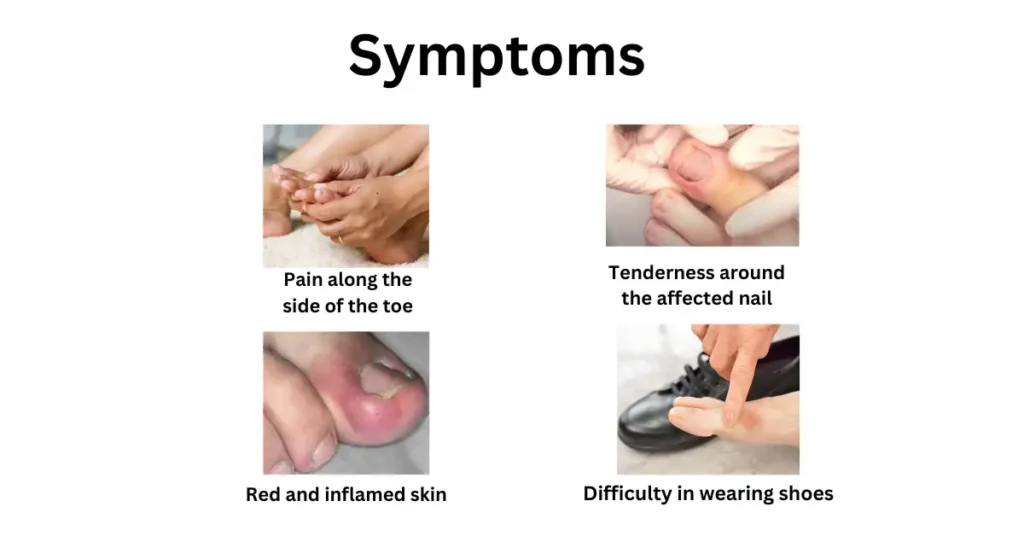
Having suffered from ingrown toenails myself, I can attest to the sharp pain that accompanies each step. The tenderness made even the lightest touch excruciating, and the swelling forced me to wear open-toe footwear for relief. Addressing this issue quickly is key to avoiding a more severe infection and ensuring a swift recovery.
Causes
Ingrown toenails can develop due to various reasons, and understanding these causes is crucial for prevention and treatment. Here are the common causes:
- Cutting the toenails incorrectly, such as trimming them too short or not cutting them straight across.
- Wearing tight or ill-fitting shoes that crowd the toenails.
- Having very curved nails naturally predisposes individuals to ingrown toenails.
- Certain medical conditions, like diabetes or past infections, can exacerbate the problem.
- Injuries to the toes or nails can cause irregular nail growth.

From personal experience, I found that wearing tight sneakers for extended periods contributed to my recurrent ingrown toenails. Cutting my nails too short and not paying attention to shaping them straight across also led to numerous painful episodes. It wasn’t until I adopted proper nail care practices and switched to more comfortable footwear that I saw significant improvement.
Risk factors
Various risk factors can increase the likelihood of developing an ingrown toenail. Here are the common risk factors:
- Adolescents are particularly prone due to their rapidly growing feet.
- Feet often perspire more, which softens the skin and makes it easier for the nail to penetrate.
- Poor nail care habits, such as cutting the nail too short or rounding the corners, can encourage the nail to grow into the skin.
- Wearing tight shoes that constrict the toes further increases the risk.
- Participating in activities like running or kicking, increases the risk of injury to the toes.
- Medical conditions such as diabetes or poor blood flow, reduce the body’s ability to repair damaged skin and nails.
From my personal experience, being an active individual who frequently goes running, I’ve had multiple instances of ingrown toenails caused by kicking sports. My nail care habits needed adjustment, as I was guilty of cutting my nails too short and rounding the edges. Investing in proper nail care techniques and choosing shoes that don’t constrict my toes have made a significant difference in minimizing the frequency of this painful condition.
Complications
An ingrown toenail can lead to severe complications, especially for those with diabetes and poor blood flow. Damaged nerves in the feet can mask the pain, allowing minor foot injuries like a cut, scrape, corn, or callus to become infected if they don’t heal properly.
Diagnosis
To diagnose an ingrown toenail, a doctor will start by carefully examining the area, and looking for signs of redness, swelling, and tenderness.
Expected Duration
Ingrown toenails can sometimes correct themselves as they grow out, but advanced cases may need surgery for proper healing and long-term relief.
Prevention
To prevent ingrown toenails from forming, follow these guidelines:
- Cut your toenails straight across, without rounding the corners.
- Ensure no part of the nail is buried in the skin.
- Use sharp clippers to trim your nails, avoiding a jagged or forked edge that could extend into the skin.
- Smooth any rough edges with a nail file.
- Wear shoes large enough not to push your toes together.
- Be especially careful if you are elderly or have diabetes or circulation conditions, and prioritize foot health.
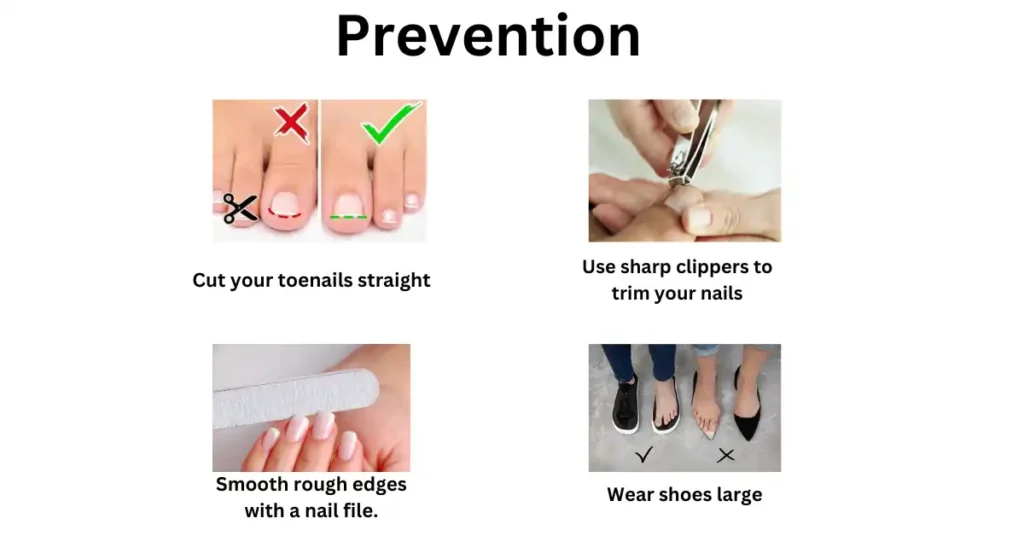
From my personal experience, being diligent in how I cut my toenails and choosing well-fitted shoes made a significant difference. The simple act of filing any jagged edges has helped prevent any ingrown toenails from recurring, maintaining overall foot health.
Treatment
1. For the early stages of an ingrown toenail, you should soak your foot in warm water with antibacterial soap or salt, then dry it thoroughly and apply an over-the-counter antibiotic ointment or hydrocortisone.
2. Use a clean dressing and avoid cutting the nail further.
3. Wear open-toed or loose-fitting shoes to alleviate pressure.
4. If it doesn’t improve within a few weeks, a doctor may need to prescribe stronger prescription-strength corticosteroids or perform a minor procedure where the edge of the nail is lifted, and pus is drained using a local anesthetic.
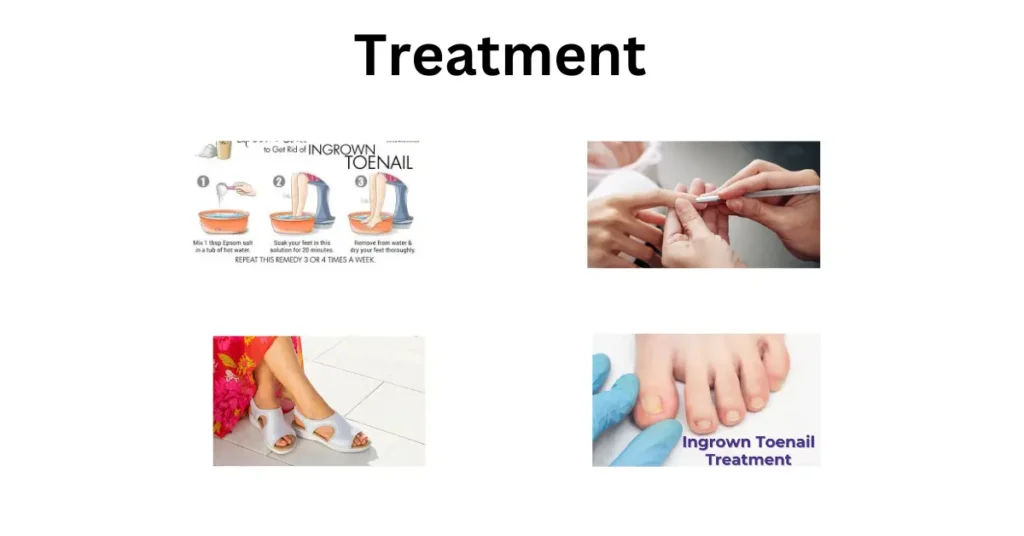
In advanced cases, removing a vertical strip of the nail and applying phenol can help prevent it from regrowing into the skin.
Conclusion
Addressing an ingrown toenail early with proper care can prevent complications and ensure swift recovery. By adopting preventive measures and seeking timely medical intervention, you can alleviate pain and maintain healthy nails. Always prioritize proper foot health to avoid recurring issues.
FAQ,s
How do you prevent ingrown toenails?
To prevent an ingrown toenail, keep your feet clean and dry, wear shoes that fit properly, and trim your nails by briefly soaking your foot in warm water before trimming.
What deficiency causes ingrown toenails?
A deficiency in essential nutrients like keratin, protein, vitamins B12, C, D3, zinc, and iron can impact nail health and the development of strong toenails, making them more susceptible to ingrown.
